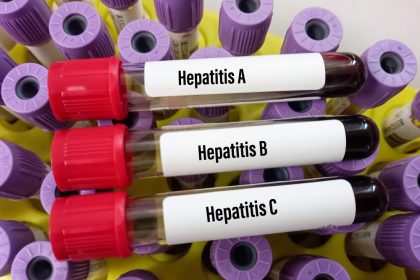Changes in the groin area can signal important health concerns that require medical attention. While many men hesitate to discuss these issues, understanding and addressing them promptly can prevent serious complications. Research shows that early intervention can reduce the risk of long-term health problems by up to 80%.
Understanding the symptoms
Physical changes in the groin area may indicate various underlying conditions. Medical professionals identify several key factors that warrant attention.
Primary indicators
- Sensations of heaviness or pressure
- Noticeable physical changes in tissue
- Discomfort during physical activities
- Changes in tissue firmness or elasticity
- Unusual pressure or pulling sensations
- Temperature changes in the area
- Visible swelling or asymmetry
Studies indicate that over 40% of men experience these symptoms at some point, yet only 30% seek timely medical attention.
Key medical concerns
Several conditions can cause these symptoms, ranging from minor to serious. Understanding potential causes helps inform treatment decisions.
Circulatory issues
- Varicoceles: Enlarged veins affecting 15% of adult men
- Reduced blood flow from lifestyle factors
- Vascular changes due to age or health conditions
- Circulation problems linked to systemic conditions
- Temperature regulation disruptions
Structural changes
- Muscle weakness from sedentary lifestyle
- Tissue alterations due to aging
- Support structure deterioration
- Physical strain from occupational factors
- Activity-related tissue stress
- Hernias affecting supportive tissues
Impact on reproductive health
Changes can significantly affect various aspects of reproductive function and overall well-being.
Fertility considerations
- Sperm production changes
- Temperature regulation disruption
- Hormone balance alterations
- Tissue health impact
- Reproductive function changes
- Long-term fertility effects
Research shows that addressing these issues early can preserve fertility in up to 85% of cases.
Diagnostic approach
Modern medical diagnostics offer comprehensive evaluation options:
Initial evaluation
- Detailed physical examination
- Complete medical history review
- Family history assessment
- Lifestyle factor analysis
- Symptom timeline documentation
Advanced diagnostics
- Ultrasound imaging
- Blood flow studies
- Hormone level testing
- Tissue density assessment
- Specialized imaging when needed
Treatment strategies
Treatment options vary based on underlying causes and severity:
Conservative management
- Lifestyle modifications
- Activity adjustments
- Supportive garments
- Physical therapy techniques
- Preventive exercises
Medical interventions
- Prescribed medications
- Minimally invasive procedures
- Surgical options when necessary
- Hormone therapy if indicated
- Follow-up care protocols
Success rates for early intervention exceed 90% for most conditions.
Prevention strategies
Proactive measures can significantly reduce risk and improve outcomes:
Lifestyle factors
- Regular exercise routines
- Proper nutrition guidelines
- Weight management strategies
- Stress reduction techniques
- Activity modification plans
Specific exercises
- Pelvic floor strengthening
- Core muscle development
- Flexibility improvement
- Cardiovascular fitness
- Balance training
Age-specific considerations
Different age groups face varying risks and require specific approaches:
Young adults (20-35)
- Sports-related injuries
- Occupational strain
- Lifestyle impacts
- Fertility concerns
- Preventive care
Middle-aged men (35-50)
- Age-related changes
- Chronic condition impacts
- Hormone fluctuations
- Lifestyle adaptations
- Regular monitoring needs
Older adults (50+)
- Natural aging effects
- Chronic health management
- Medication influences
- Activity modifications
- Regular assessment importance
Psychological impact
Mental health plays a crucial role in addressing physical symptoms:
Common concerns
- Anxiety about changes
- Impact on self-image
- Relationship effects
- Treatment hesitation
- Future health worries
Support systems and professional counseling can help address these aspects.
When to seek emergency care
Certain symptoms require immediate medical attention:
Red flags
- Sudden severe pain
- Rapid swelling
- Color changes
- Loss of function
- Associated symptoms
- Fever or chills
Studies show that prompt attention to these symptoms can prevent 95% of serious complications.
Health care navigation
Effectively working with medical professionals:
Communication strategies
- Document symptoms clearly
- Track timeline of changes
- Note related health issues
- Prepare specific questions
- Follow up appropriately
Medical team coordination
- Primary care physician
- Specialist referrals
- Physical therapists
- Diagnostic facilities
- Support services
Long-term management
Ongoing health maintenance requires:
Regular monitoring
- Scheduled check-ups
- Self-examination routine
- Symptom tracking
- Progress assessment
- Risk factor management
Lifestyle maintenance
- Consistent exercise
- Healthy diet
- Stress management
- Sleep quality
- Activity balance
Future considerations
Advances in medical care continue to improve outcomes:
Medical developments
- New diagnostic tools
- Treatment innovations
- Minimally invasive options
- Preventive strategies
- Research advances
Remember that medical professionals routinely address these concerns and can provide appropriate evaluation and care. Early intervention often leads to better outcomes and simpler treatment options. Studies show that men who seek timely care experience better health outcomes and quality of life improvements in 85% of cases.
This story was created using AI technology.

















